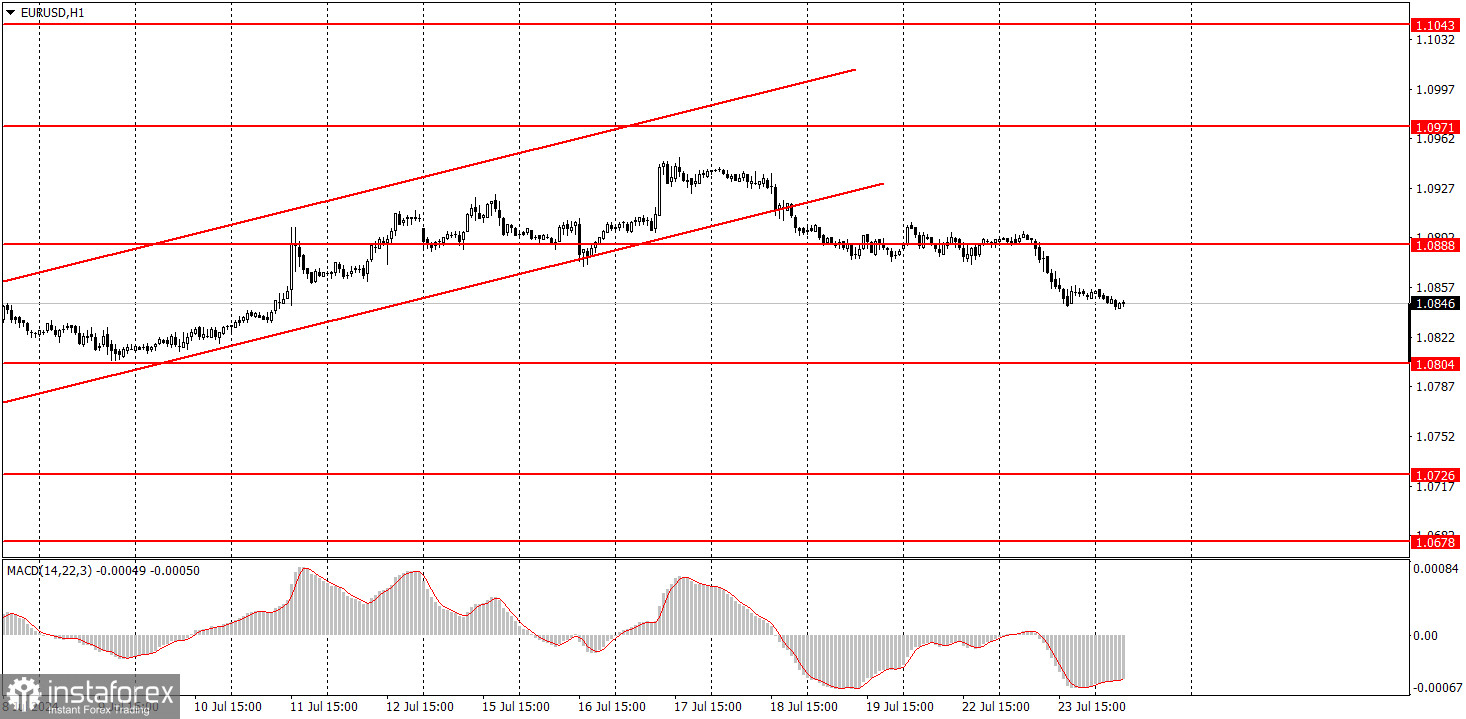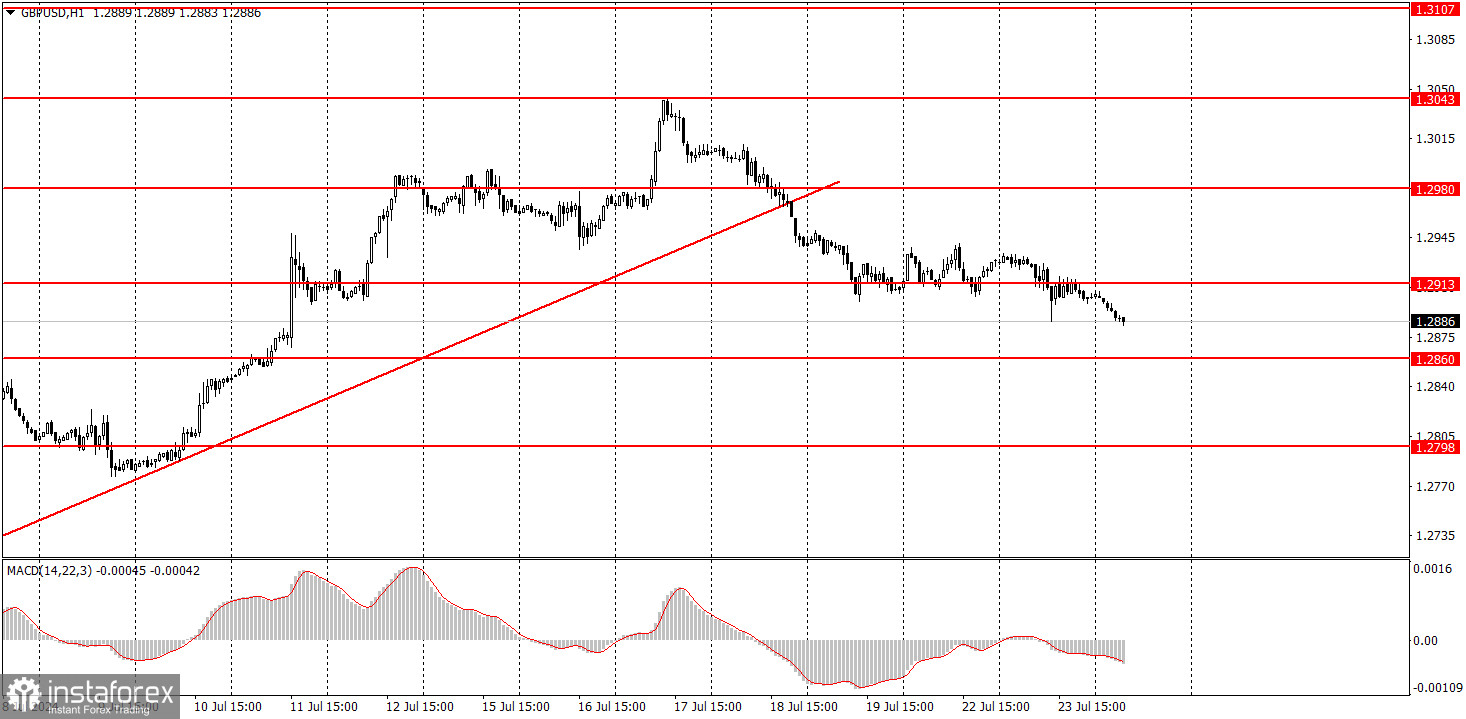Analysis of macroeconomic reports:

Several macroeconomic events are scheduled for Wednesday. Business activity indexes for the service and manufacturing sectors will be released in Germany, the EU, the US, and the UK. These indicators are considered "leading indicators" of economic conditions. If business activity is rising, the economy is also expected to accelerate. Forecasts suggest that European and British indexes are expected to rise today, while American ones may continue to slow down. Thus, the US dollar may come under pressure today. However, both currency pairs have started downward trends on the hourly chart, so a decline is expected over the next two to three weeks.
Analysis of fundamental events:

Among the fundamental events on Wednesday, speeches by European Central Bank monetary committee members Philip Lane and Luis de Guindos are noteworthy. They are significant officials, so interesting statements can be anticipated. However, with few essential economic reports in the EU over recent weeks, there will likely be little basis for changes in their rhetoric concerning monetary policy.
General conclusions:
Today, we can only highlight the business activity indexes. Deviations from their forecasted values may prompt market reactions. Of course, predicting the direction of deviations and which indexes will be affected is impossible. Therefore, responses need to be made in real-time.
Basic rules of a trading system:
1) The strength of a signal is determined by the time it took for the signal to form (bounce or level breakthrough). The shorter the time required, the stronger the signal.
2) If two or more trades around a certain level are initiated based on false signals, subsequent signals from that level should be ignored.
3) In a flat market, any currency pair can produce multiple false signals or none at all. In any case, it's better to stop trading at the first signs of a flat market.
4) Trades should be opened between the start of the European session and mid-way through the U.S. session. All trades must be closed manually after this period.
5) In the hourly time frame, trades based on MACD signals are only advisable amidst substantial volatility and an established trend, confirmed either by a trendline or trend channel.
6) If two levels are too close to each other (from 5 to 20 pips), they should be considered as a support or resistance zone.
7) After moving 15 pips in the intended direction, the Stop Loss should be set to break-even.
What the charts show:
Support and Resistance price levels can serve as targets when buying or selling. You can place Take Profit levels near them.
Red lines represent channels or trend lines that depict the current trend and indicate the preferred trading direction.
The MACD (14,22,3) indicator, encompassing both the histogram and signal line, acts as an auxiliary tool and can also be used as a source of signals.
Important speeches and reports (always noted in the news calendar) can profoundly influence the price dynamics. Hence, trading during their release calls for heightened caution. It may be reasonable to exit the market to prevent abrupt price reversals against the prevailing trend.
Beginners should always remember that not every trade will yield profit. Establishing a clear strategy, coupled with effective money management, is key to long-term success in trading.





















